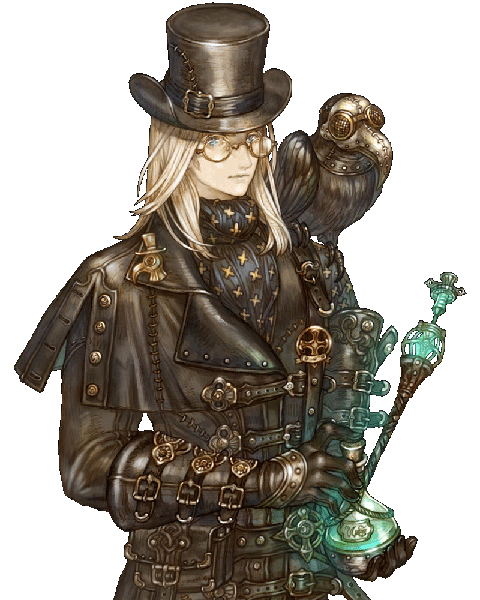The Lore You Know: Plague Doctor
By STAFF_Letitia
Dec 29th, 2017

Today we will dive into the history that inspired our Cleric Rank 7 Class and Class Master, the Plague Doctor. Although, I have a feeling many of you are already familiar with its history.
The iconic image and role of the Plague Doctors came about due to the Black Death. The Black Death was a bubonic plague that arrived in Europe by sea in 1347 and over the next five years killed more than 20 million people in Europe alone. Now, keep in mind that the Black Death struck during Medieval Times where medical knowledge was limited and the people, highly superstitious. When the Black Death swept across Europe like a curse with seemingly no rational explanation, the people turned to the only ones willing to “treat” the disease – Plague Doctors.

Plague Doctors were hired by towns and villages (not by individuals) to treat those affected by the Black Death. But the word “treat” can be used loosely here since it’s debatable whether the majority of Plague Doctors were helping keep the plague at bay or were increasing the rate at which it spread. Regardless, Plague Doctors had an array of treatments they used to offer medical care based on the Medieval medical practicie of the four bodily fluids. Doctors during this time believed that the human body needed a balance between blood, mucus, yellow bile, and black bile in order for the person to be considered healthy. This is why an infamous treatment of the Plague Doctor was Bloodletting.

Besides treating the infected, Plague Doctors also recorded the number of deaths and took part in autopsies. Their easily identifiable costume was also a reflection of their role in society. As they were to be the closest to the diseased they had to prevent themselves from being infected as well. Their outfit was originally created by Charles de l’Orme in the 17th century and consisted of a leather hat, a beak-like mask with red glass eyes, a black overcoat, leather breeches, and to top it all off, a wooden cane.

The “beak” of the mask was filled with drugs and strong smelling items to cover the scent of death. The Plague Doctors also believed that this protected them from the “bad air” of the plague. The leather hat was a symbol for 14th Century doctors and many believed the hat could shield doctors from bacteria. The black overcoat and leather breeches were to minimize skin exposure, while the wooden cane was a way for the doctors to examine patients and move bodies without direct contact. However, despite their costumes, the doctors were not immune to the plague and many of them fell ill or were ultimately quarantined.
So now, if we take a look at our own Plague Doctor, we can see reflections of this history in their skills and class outfit – although our doctors are a bit more fashionable than the ones from history and a little less worried about minimizing skin exposure. And let’s keep in mind that the Plague Doctors of history did not purposefully pass on Black Death or other diseases to their enemies. In this case we wouldn’t want art to imitate life.

References
Dugan, B., 2013. Anatomy of 14th Century Bubonic Plague Hazmat Suits. [Online]
History, 2010. Black Death. [Online]
Medieval Medicine. The Humors. [Online]
Plague Doctor Masks, 2017. History of Black Death. [Online]
Sartore, M. 13 Horrifying Things Most People Don't Know About Plague Doctors. [Online]
